
by bungalow101 | Dec 9, 2022 | Doing it the right way
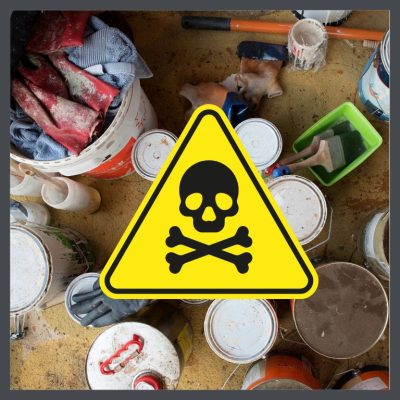 The dangers of restoring an old house can be considerable, but with proper planning can be minimized. Let’s take a look at the actions required.
The dangers of restoring an old house can be considerable, but with proper planning can be minimized. Let’s take a look at the actions required.
A contractor has been hired to begin the restoration of your home. You have discussed your staying in the house while the work is being performed & you have figured out how to do it despite the inconveniences. But what about the dangers to which you might be exposed?
The fact of it is that you will be living in a jobsite, in the middle of sawdust, paint, solvents & other fumes. Some of these materials may not give you any warning signs of their danger- such as a bad odor or immediate irritation, so it’s a vital to understand the hazards to yourself, your family & to your pets (whom we know are family but I just want to mention them because they live close to the floor & they lick themselves.)
Fortunately, by law, all the dangerous materials that will be used in the restoration of your old house, have detailed, written safety information about them. These materials should be named in the bids you receive from contractors, & your contractor should be happy to provide you with copies of the safety information, but if he balks, (uh, not a good sign) you can get them directly from the manufacturer online.
SAFETY DATA SHEETS & THE DANGERS OF RESTORING AN OLD HOUSE
 OSHA (Occupational Safety & Health Administration) is a U.S. federal body whose mission is to “assure safe & healthy working conditions for working men & women by setting & enforcing standards & by providing training, outreach, education, & assistance.”
OSHA (Occupational Safety & Health Administration) is a U.S. federal body whose mission is to “assure safe & healthy working conditions for working men & women by setting & enforcing standards & by providing training, outreach, education, & assistance.”
Their Hazard Communication Standard requires that each manufacturer, distributor, or importer provide Safety Data Sheets (SDS’s) for each hazardous material to users & workers to explain information on these hazards, clearly & thoroughly. The Standard requires that the information be presented in a consistent, user-friendly format.
Previous regulations did not mandate this standard & manufacturers did not use safety materials that were consistent one to the next. For example, some manufacturers labeled the most dangerous materials as a 1, others did the complete opposite, labeling the most dangerous as a 5. And, the data was not organized in a consistent fashion so you had to search the contents for the information that you needed each time. Some of these sheets contain multiple pages so you can see that these inconsistencies would not be helpful in an emergency situation!
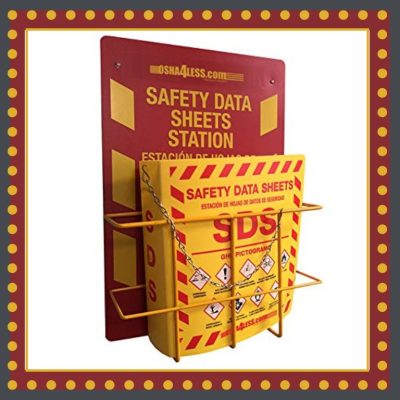 SDS’s tell users, both workers & homeowners, the properties of each chemical, what the hazards of the product are to the individual & to the environment. They let you know how to use the product safely, what will happen if the recommendations are not followed, & how to recognize symptoms of exposure. Very importantly, they lay out the steps of what to do if emergencies should occur.
SDS’s tell users, both workers & homeowners, the properties of each chemical, what the hazards of the product are to the individual & to the environment. They let you know how to use the product safely, what will happen if the recommendations are not followed, & how to recognize symptoms of exposure. Very importantly, they lay out the steps of what to do if emergencies should occur.
Your contractor is required by law to keep these in the workplace & to train his workers on them so that they will know how to handle these hazardous materials to keep themselves & others safe. Fortunately, there are safety companies that create safety meetings that can be done in the field every week. Each one is a sheet of paper with the information on it that each person reads & signs off. Easy peasy.
This is the minimum safety training that a professional company performs in order to reduce the amount of dangers inherent in restoring old houses, for their employees & for you.
I do not recommend the hiring of any contractor or tradesperson who has a casual attitude, or who is ignorant of the importance of Safety Data Sheets.
THE SDS SECTIONS- FROM THE TOP
Lists the specific materials & names its intended use. It also provides you with the contact information for the supplier.
- Provides warning of the hazards of the material.
- Lists the all ingredients of the product.
- Describes the first aid treatment that would be given by an untrained person in case of exposure.
- Provides instructions for fighting a fire caused by the chemical.
- Gives instructions on dealing with accidental spills, leaks or releases in order to minimize harm to persons or property.
- All data about safe handling & storage.
- Lays out exposure limits with solutions for minimizing such exposure.
- Identifies physical & chemical properties associated with the product.
- Describes the various actions of the chemical constituents under various conditions.
- Explains the toxic & health damaging properties of the material.
- Describes the product’s environmental impact.
- Proper disposal & safe handling of materials & containers.
- Proper shipping.
- States the safety, health & environmental regulations that apply to the products.
- Dates of when the sheet was created or edited.
These sheets may be short & sweet but they also may be many pages long. Studying them is not an entertaining or amusing task, but it’s one to not overlook when you wish to mitigate or avoid the dangers in restoring your old house.
GLOBALLY HARMONIZED SYSTEM
The Globally Harmonized System (GHS) is an international system of hazard communication which provides a standard system to format safety data sheets & to label hazardous elements in pictograms.
PICTOGRAMS: a pictorial symbol for a word or phrase.
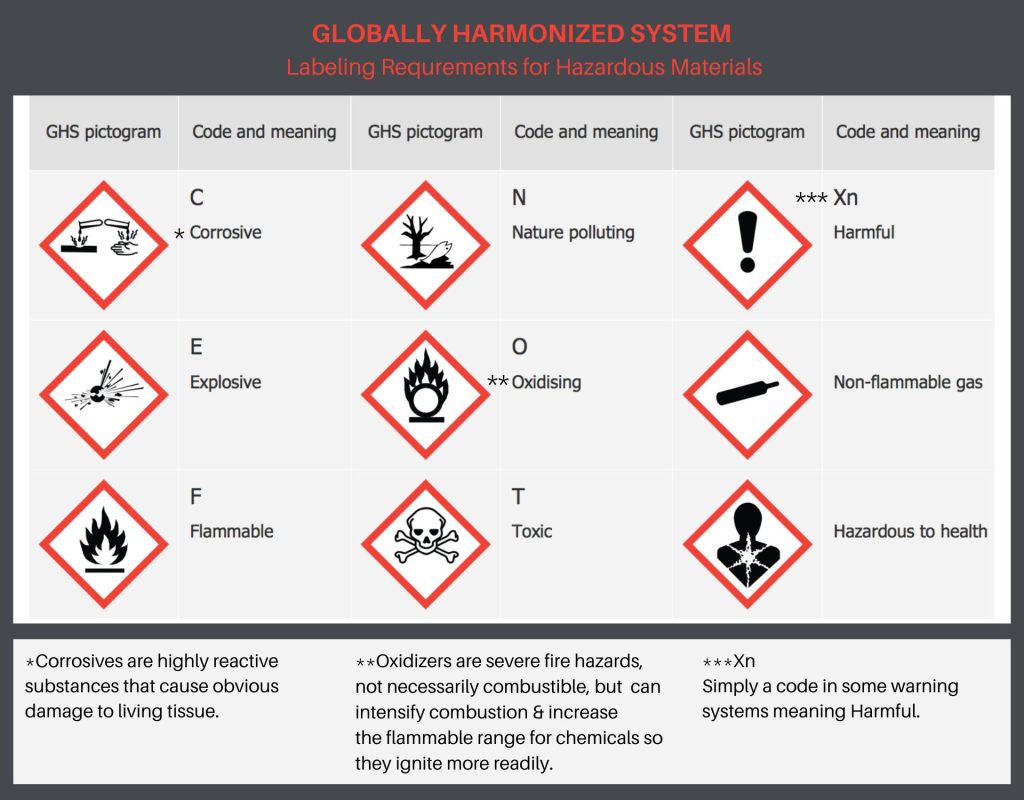
Hazard pictograms are used to warn us about the presence of a hazardous (to people &/or the environment) chemical. These pictograms appear in the shape of a diamond with a bright red border & a white background. Any single chemical could have one or more than one of these warning images.
If you should like to read more about SDS’s, OSHA has a document that provides more information. In reading the sheets you are going to run into many words you do not understand. OSHA provides a glossary of terms that you might find helpful.
SORRY, THERE’S MORE
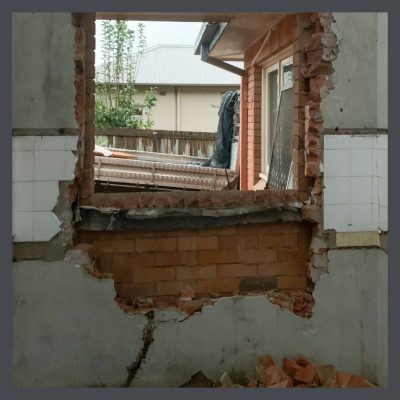 The SDS’s are about only the new materials that are being used. There’s also the issue of the old materials coming out. Amongst these is our old buddy, lead. I’m not a fan as I have expressed loudly in this article.
The SDS’s are about only the new materials that are being used. There’s also the issue of the old materials coming out. Amongst these is our old buddy, lead. I’m not a fan as I have expressed loudly in this article.
There’s an abundance of other materials & pathogens to pay attention to during demo. This is a good article to prepare you for what you are very likely to encounter. I’d also like to send you to my YouTube playlist, SAFETY FIRST, which is an introduction to personal protective equipment.
The first one by the little animated woman with the cute English accent makes a good point. The equipment that is need is not task oriented. It must keep you safe in the environment.
Disclaimer: There is a great deal more information on construction safety than what you see in this article & in these videos. This is merely an introduction to the topic. I am not a safety professional. I’m just a woman who has suffered the ill effects of being around toxic materials & I don’t want you to experience the same.
THE REWARDS OF RESTORING AN OLD HOUSE (DESPITE THE DANGERS!)
The rewards are huge. You will be saving a piece of history that is beautiful & tells a story & you will contribute to that story. You will learn & teach your children problem solving skills, design skills, communication & cooperation skills, prevailing over horrible surprises skills, budgeting skills & give them the opportunity to apply the things that they are learning in school. Studying the SDS’s (using the OSHA glossary!) & watching the videos is a great way to orient them to their physical environment & stretch those science chops. It’s also a good opportunity to teach them that there are dangers in the environment that can be overcome with knowledge & planning. A great lesson to learn early!

STAY IN THE BUNGALOW KNOW!!!
Sign up for our newsletter & receive our FREE E-book, 7 VITAL Things to Do Before You Hire a Contractor.
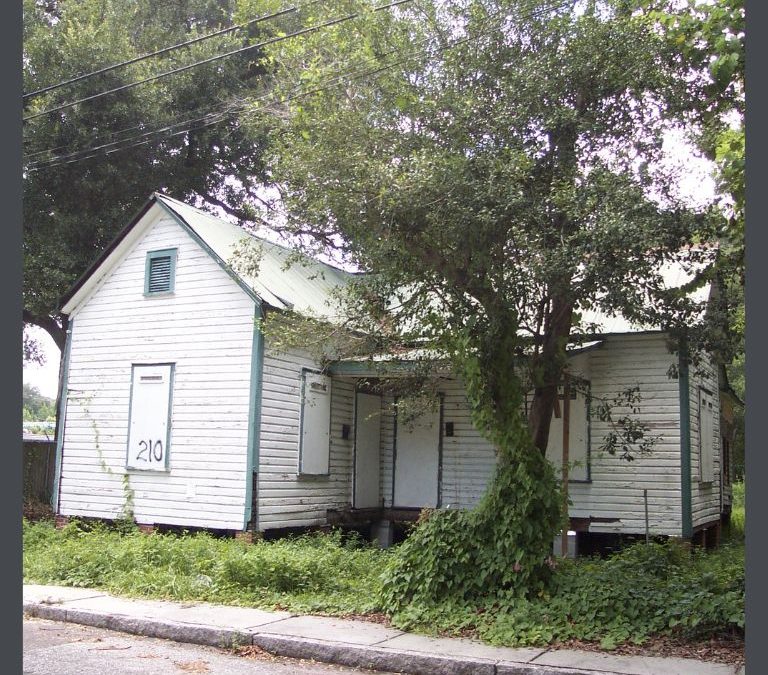
by bungalow101 | Dec 6, 2022 | Random Musings
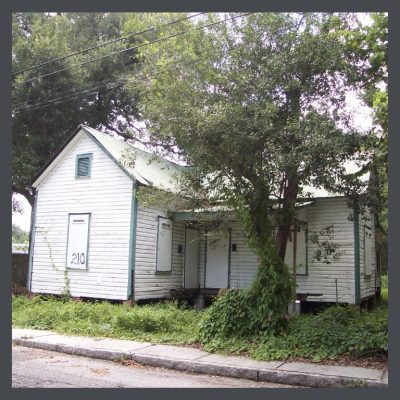 Long ago, when feebly attempting to restore a Folk Victorian, I discovered that the biggest challenge of restoring an old house is battle fatigue. It’s extremely easy to get disheartened. I know I’m not your mother (Disclaimer: I think I’m everybody’s mother.) but I restored this miserable Folk Victorian & learned some great lessons. I had to, in order to survive! I also had to keep going so that I would lose only $50,000 instead of $250,000.
Long ago, when feebly attempting to restore a Folk Victorian, I discovered that the biggest challenge of restoring an old house is battle fatigue. It’s extremely easy to get disheartened. I know I’m not your mother (Disclaimer: I think I’m everybody’s mother.) but I restored this miserable Folk Victorian & learned some great lessons. I had to, in order to survive! I also had to keep going so that I would lose only $50,000 instead of $250,000.
I started the restoration with a more experienced partner who thought it would be a great project & when it turned out not to be, of course bailed on me. And, not surprisingly, my contractor was a complete bozo who bailed on me too-a blessing in the end.
To make things even more crazy, soon after I purchased the property, the Recession hit hard so my wood flooring company lost over $30,000 that quarter as we feverishly slaved12 hours a day to keep jobs coming in & our guys’ families fed. And every dollar I put into the restoration, working on it in my non-existent spare time, turned into 50 cents. Kind of like black magic. The really awful kind of magic that turns fluffy little kittens into poisonous bufo toads before your very eyes.
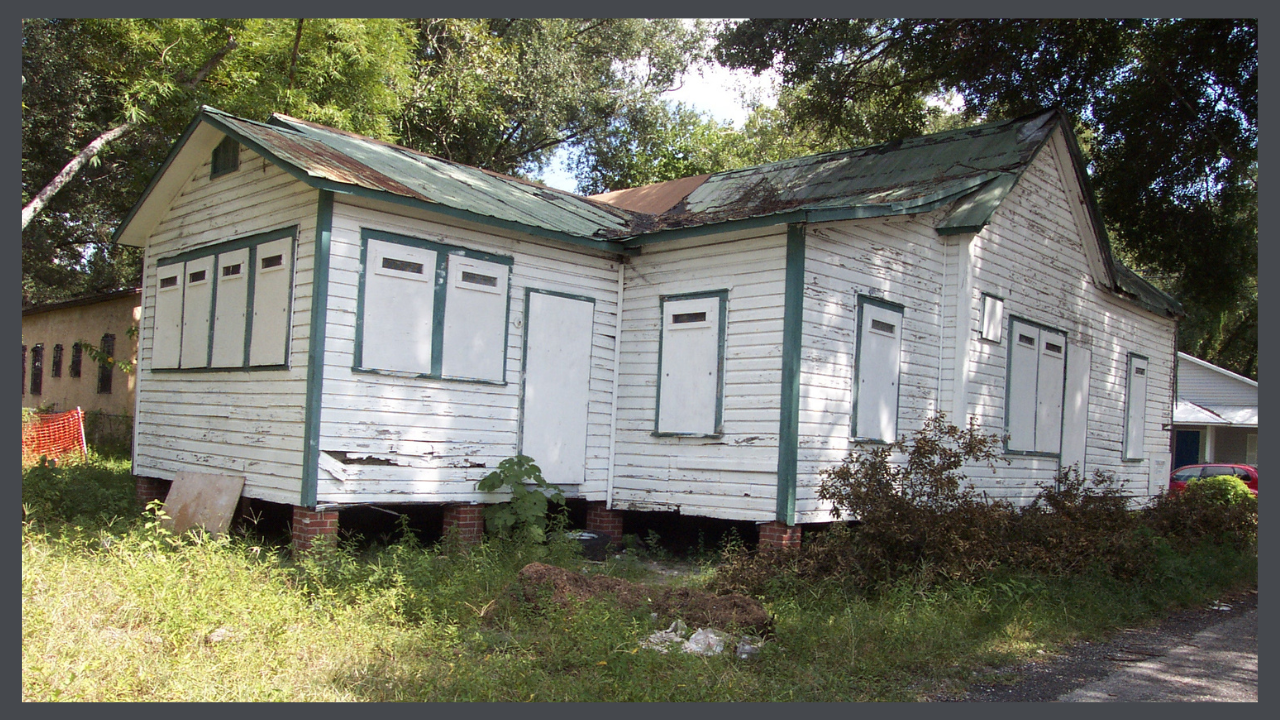
WHY DID I TAKE ON THIS CHALLENGING OLD HOUSE RESTORATION?
The wonderful neighborhood in which the house was located, Tampa Heights has a rich & colorful history as Tampa’s first suburb & boasts a large historic district. Most of the houses are lovely Victorians, bungalows, some Med-Rev’s with a smattering of Urban Renewal (Boo! Hiss!) infill. After decades of neglect & resultant blight, it has an active neighborhood association & I was eager to contribute to its revitalization. Additionally, I’d also never put my hands on a Victorian & was looking forward to dolling it up with periwinkle paint & gingerbread. However, the house was in bad shape & the challenge of restoring the old house was ridiculous. Yet, I continued on with the delusion that someday I would have a living room & a kitchen, looking out on the back yard, (which of course was nothing but a patch of tall weeds) like these folks had.
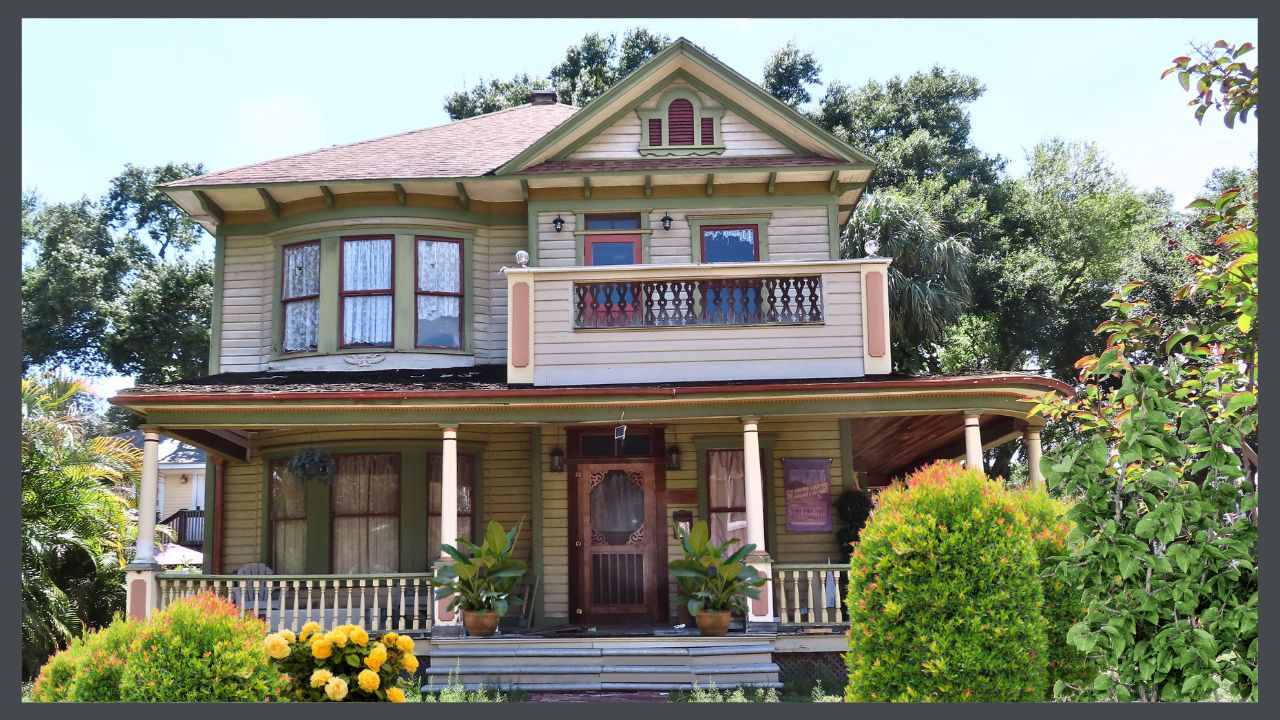
JUST HOW BAD WAS IT?
Here in Florida we joke that the only thing keeping an old house standing is the termites holding hands. Well, that was pretty much the story here. I ended up saving only a tiny amount of the original structure. Everything we touched just turned to dust. Pretty much every piece of lumber had to be replaced-walls, ceiling, floors, windows-everything.
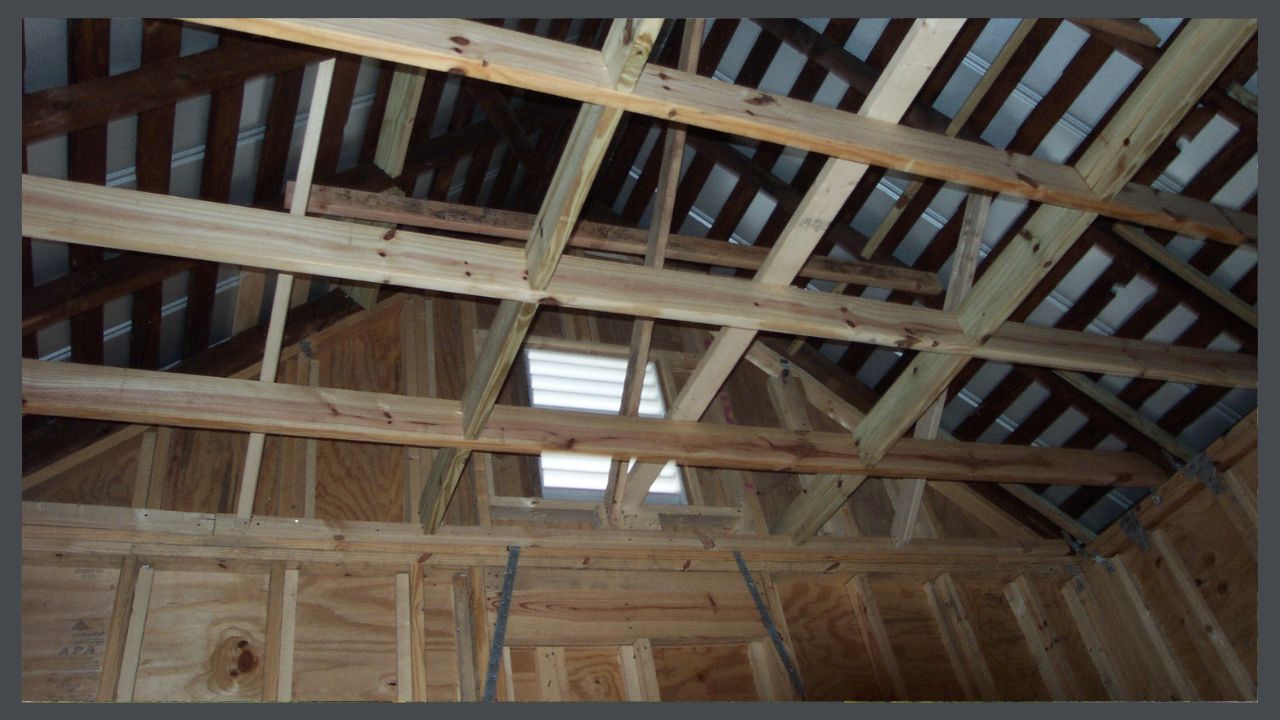
STEPS TO BEAT THE AWESOME CHALLENGE OF RESTORING AN OLD HOUSE
So what did I do in order to keep my wits sufficiently intact to get through this awful mess?
0. After much weepin’ & awailin’, I reassessed the amount of time, money & attention that the project would actually take. This was a hard one because the original estimation of effort, etc., was about 1/5 of what the situation was.
1. I made a list of the tasks that needed to be done in sequence. Each step that looked scary, I broke down into bite size bits. If they still looked scary. I chopped them up more. This is the important part. The chopping.
2. I evaluated my resources, determining what I needed for each of my steps & wrote a plan for securing items/people/skills that I didn’t have. My contractor was a scumbag who showed up some days but not others & left the jobsite such a mess I got cited by the City & had to buy many materials twice. Hey! This is Florida! If the termites don’t get it, the moisture & the heat will. And Code Enforcement’s riding right behind!
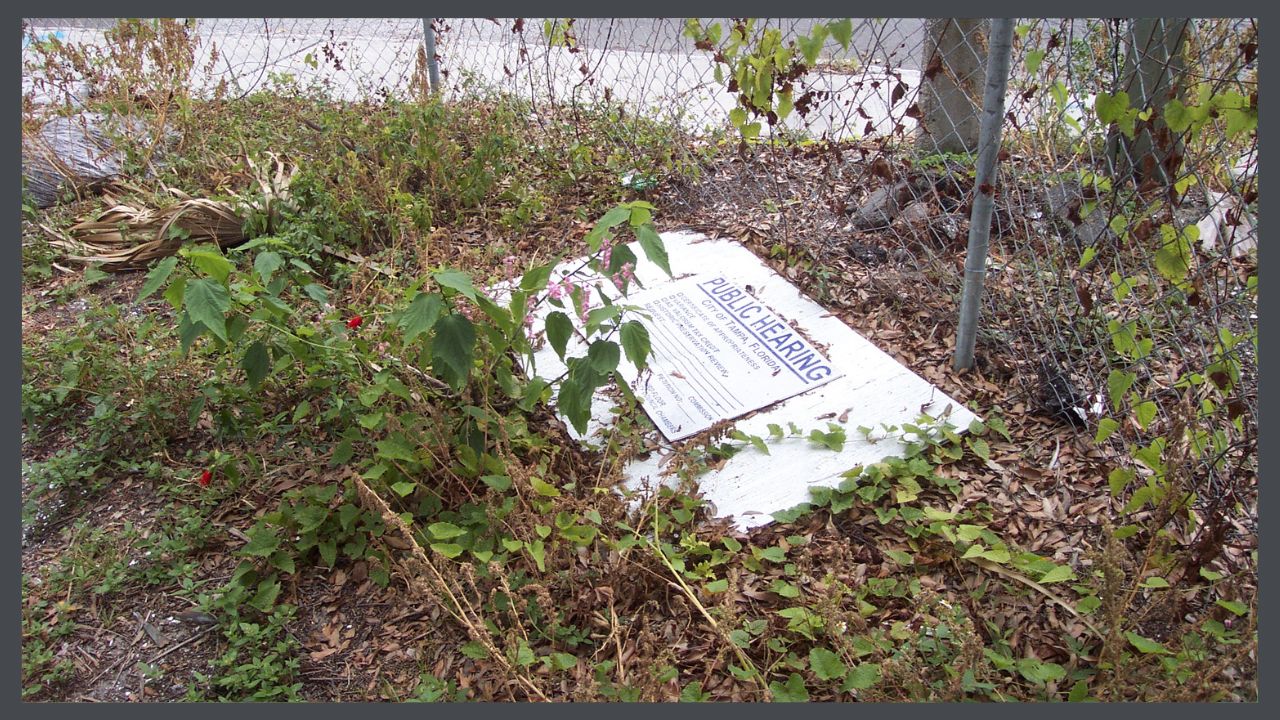
There was still a ridiculous amount of work to do, including going backward because we had missed some framing inspections. Here in tropical storm country they take those hurricane clips seriously!
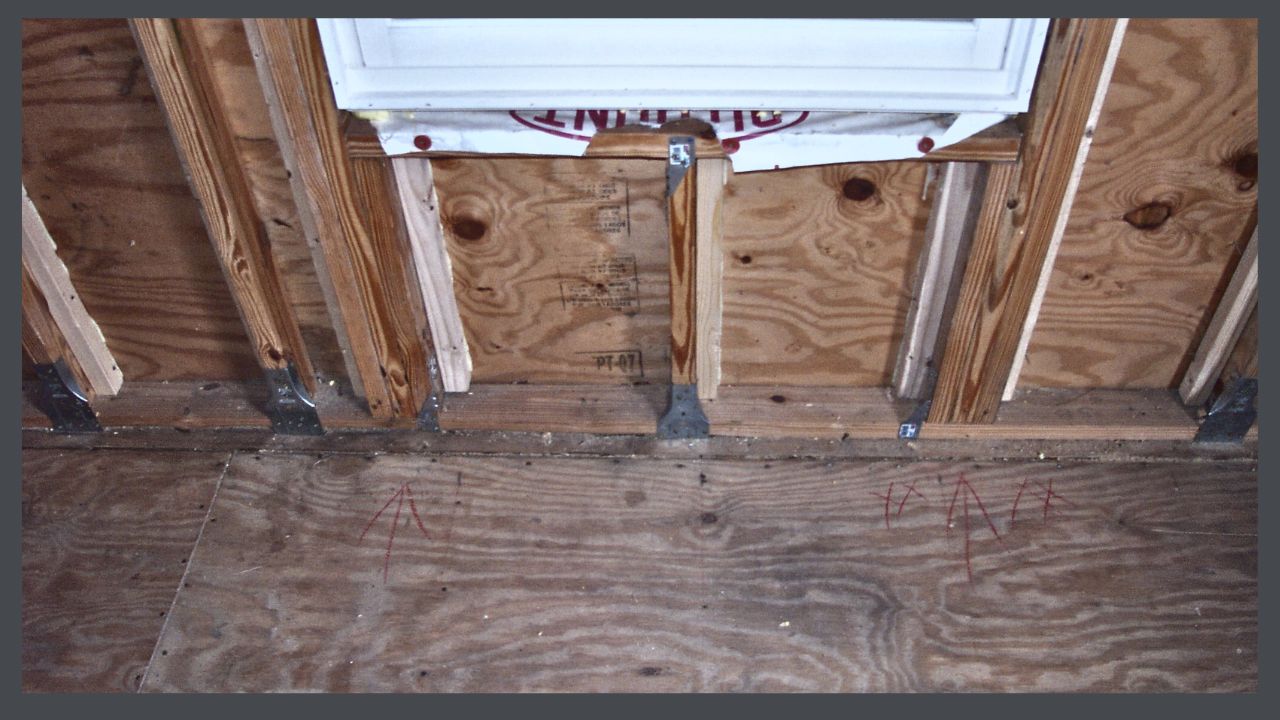
3. Once I was aware of what was in front of me, I focused on purpose. I have been a dedicated & vocal preservationist my whole life. My mother, born in 1919, taught me about the times in which she grew up & about her mother’s life on the farm. I loved those stories & when I grew up expressed this love by preserving the built environment where these lives were lived.
As a neighborhood activist for many years, I know the power of neighborhoods. I had been connected with the neighborhood association from pretty much the first moment I arrived in Tampa Bay. The first house on which I put in an offer was just around the corner. I knew & loved many folks in the area who had put blood, sweat, tears, time, $$$ & heart into revitalizing this terrific remnant of Old Tampa.
4. I took really good care of myself. My inclination when I get stressed is to head for the ice cream & potato chips. I chose veggies & protein instead & religiously took my supplements. I went on at least one walk every day & did my yoga stretches. This point is very important because if you fail to maintain your health, it becomes more difficult to perceive, to think, to make good choices & to maintain your jolly disposition.
The challenge of restoring an old house can make you old. Time & money, the main buzzkills in life are being stretched to the max. Whatever you thought it would cost, you’re going to 3X it. You’re going to sleep less, worry more & even with your PPE, you’re going to be in contact with some grisly stuff.
Yeah, I do think I’m your mama, so watch these videos on health & nutrition. I am so not kidding here.
5. Part of my staying healthy was making sure that I did not expose myself to construction debris. My first walk through of the house resulted in a sinus infection that lasted 8 weeks. I got myself a nice stock of N95 masks & made sure I wore one any time I went in after that. I learned this lesson doubly hard when one day, I stopped by, maskless & decided to just peek in. At that very moment, a wall came crashing down like nuclear blast of mold & plaster dust. And probably cockroach detritus. I was filthy from head to toe. I went home, totally grossed out by the clothes I had been wearing & jumped in the shower. A second 8 weeks of painful nose. I expanded my mask policy to include peeking in.
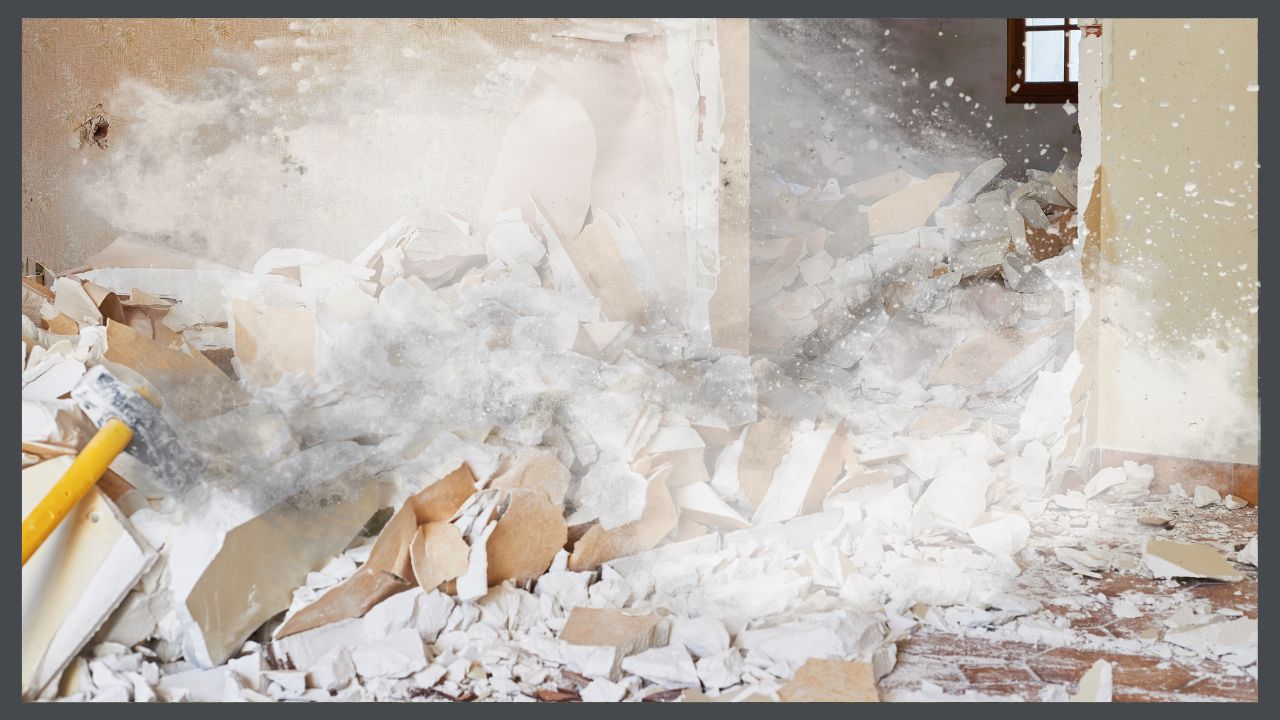
This is a group of videos about the importance of wearing the correct PPE. It applies any time you are on a jobsite. Whether or not you are performing the work, you are in a potentially unsafe environment.
I kept 1 through 5 going because without those I was doomed. It is too easy to become discouraged during an old house restoration & allow those things to slip. Too busy, just a few potato chips today- I’ll be better tomorrow. Nope! I held firm making sure my special treats gave me the nutrition I need to withstand the stress of running a project 37 levels about my knowledge base. I focused on one task at a time, completed it & moved on to the next. I love check marks & I accumulated them like a miser with his gold.
6. I celebrated every win & tossed the failures out the window. (I had quite a pile!) I stoked that purpose by cruising the internet for gingerbread choices & pictures of restored Folk Victorians to keep me looking forward. Finally, it was time to face the last challenge of restoring an old house- go outside in the Florida August heat, humidity & mosquitos to plant the garden. We’d wait until the sun went down when it was marginally cooler, put on our bug repellent (Mine was olive oil with crushed garlic which didn’t smell too great but made my skin quite lovely.) pick up our handyman, don our headlamps, & work on the dark gardens for an hour. Any longer was unbearable.
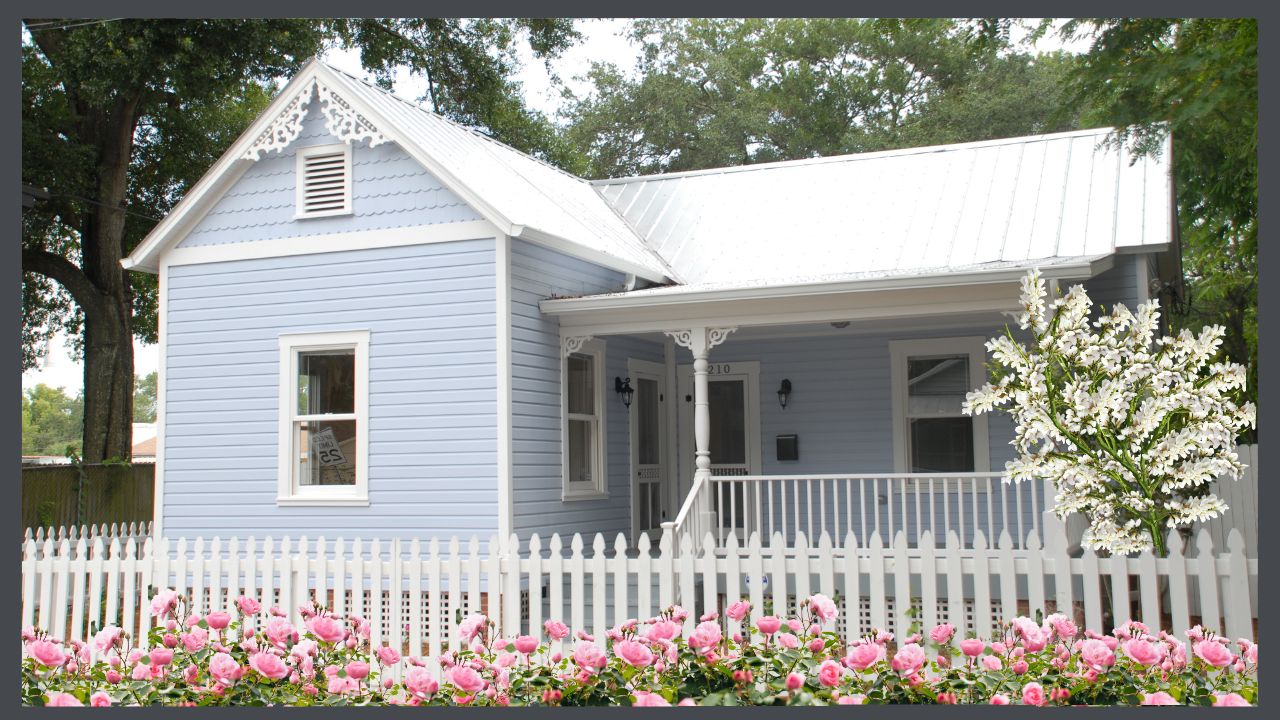
And then one day, it was complete & I received my certificate of occupancy & the newly restored house was added to the inventory of contributing structures in the historic district! A few months later, I was awarded a banner from our local preservation advocacy organization for my “outstanding historic preservation project.” My beautiful little periwinkle with plum doors, Folk Victorian!
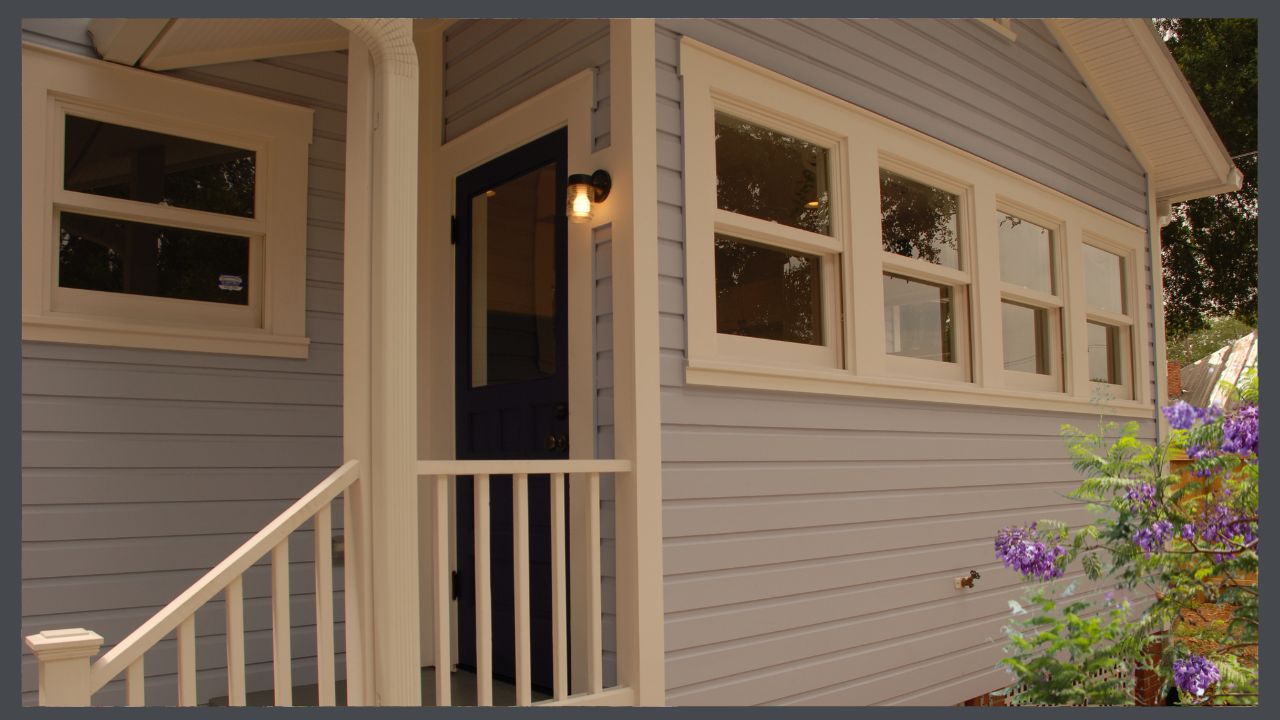
TIP: Another good one to read before you plunk down your hard-earned cash is HAVING A SUCCESSFUL BUNGALOW RESTORATION, Part 1.
 STAY IN THE BUNGALOW KNOW!!!
STAY IN THE BUNGALOW KNOW!!!
Sign up for our newsletter & receive our FREE E-book, 7 VITAL Things to Do Before You Hire a Contractor.
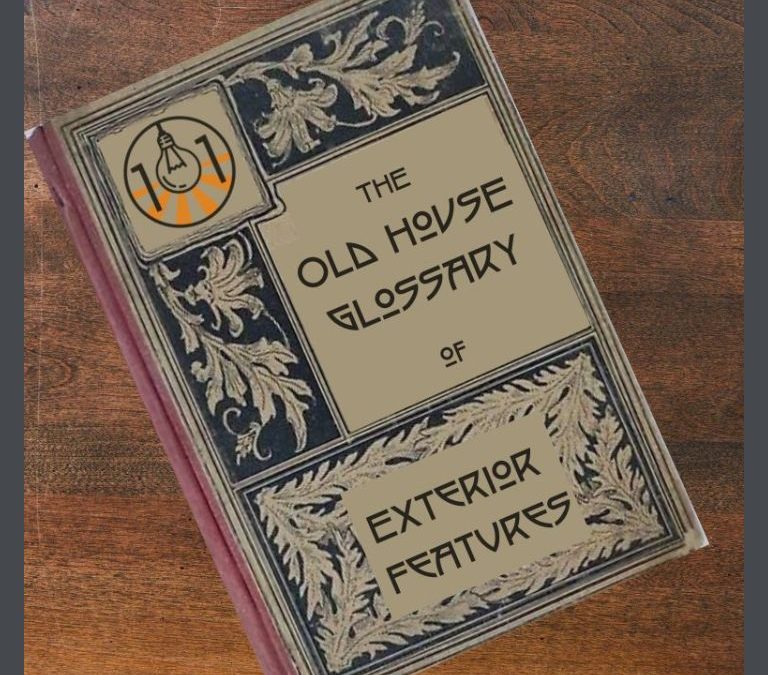
by bungalow101 | Dec 4, 2022 | Features
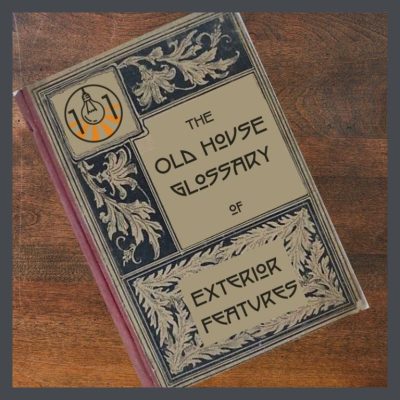 This bungalow details exterior glossary will help you get a rapid grasp of what makes a bungalow a bungalow, & not a Mid-Century, a Queen Anne or a Dutch Revival. Many of the terms are applicable to other styles of homes, & some to all periods of architecture & it’s not bad to know them if you love old houses like I do. It’s easier to sing the song if you know all the words. To get really acquainted with all the magic of bungalows, begin at the beginning. Please let me know if you run across any terms in your study of bungalows that are not defined here, or if you should find any of my explanations incomplete or difficult to understand, I’d like to know that too. I studied architecture on my own & would have loved to have had a glossary when I was reading books about it. After stumbling about, I decided to create my own. Regional terms also threw me when I moved from California to Florida.
This bungalow details exterior glossary will help you get a rapid grasp of what makes a bungalow a bungalow, & not a Mid-Century, a Queen Anne or a Dutch Revival. Many of the terms are applicable to other styles of homes, & some to all periods of architecture & it’s not bad to know them if you love old houses like I do. It’s easier to sing the song if you know all the words. To get really acquainted with all the magic of bungalows, begin at the beginning. Please let me know if you run across any terms in your study of bungalows that are not defined here, or if you should find any of my explanations incomplete or difficult to understand, I’d like to know that too. I studied architecture on my own & would have loved to have had a glossary when I was reading books about it. After stumbling about, I decided to create my own. Regional terms also threw me when I moved from California to Florida.
This glossary has been side-checked by Jo-Anne Peck of Historic Shed. Jo-Anne has an undergraduate degree in Building Science, a Masters degree in Historic Preservation & is a certified Florida Building Contractor who has been involved in consulting, design & construction for historic buildings for over 25 years. If a definition needs more than just an image, I’m linking you to my YouTube Channel because I have scooped up some great information on my playlist. Again, alert me to any good ones I may have overlooked. I’m working on a glossary for interior terms & will link it here also when it’s complete.
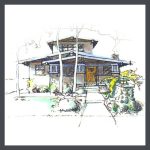
Airplane Bungalow
This type of bungalow features a large, single room on the second floor, generally surrounded completely by windows, designed to be for sleeping in warm weather.
When I go out toodling around shooting bungalows, I look for airplanes because they often have other interesting features.
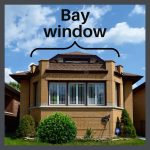
Bay Window
A window generally, of three wall segments. The two side wall segments are attached to the main wall of the home & project at an angle. A wall section is built parallel with the home’s main wall. Each wall section contains a window (or windows).

Beadboard
Though used inside, eaves & porch ceilings are typically built of beadboard, a tongue & groove paneling with a small beaded groove running along the length. The little indentation or ridge is the “bead.”
Beam
A framing member usually significantly larger than other framing members that carry roof or floor loads over a certain span.
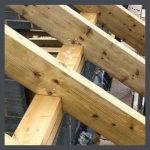
Birdsmouth Joint
A triangular-shaped cut that allows a rafter to sit squarely on the framing.
Bungalow
See this Post

Camber beam
A piece of timber cut archwise. It is much stronger than another of the same size, since being laid with the hollow side downwards, as they usually are, they form a kind of supporting arch.
Casing
Pieces of wood trim surrounding a window or door. It can range from very plain to quite elaborate depending on the home style.
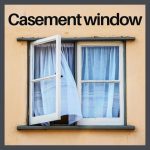
Casement Window
A window that pivots on a side hinge much like a door with a handle to crank the window open.
Character defining features
The visual and physical features that give a building its identity & distinctive character, i.e., why we love bungalows!
Clapboard
Also called bevel siding, lap siding, or weatherboard, depending on the region, clapboard is wide wood siding usually overlapping, installed horizontally to form exterior walls. Why is it called clapboard? The word comes from the Dutch klappen, which means “to split.”
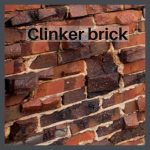
Clinker bricks
Bricks that are produced when wet clay bricks are exposed to excessive heat during the firing process, forming a shiny, dark-colored coating, giving them a blackened appearance. They are usually irregular in shape, often misshapen or split. Clinker bricks are used Arts & Crafts houses to add interest.
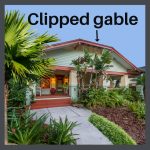
Clipped Gable
Or jerkinhead roof (it’s much more fun to say jerkinhead). Instead of ending with a point, it is flattened at the end with a small hip. This feature reduces wind force on facades, probably why you see so many of them in Flor-ee-da.
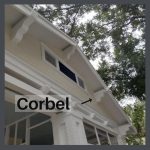
Corbel
A weight-bearing architectural element that projects from the wall & supports a structure above it, especially one that is stepped upward and outward from a vertical surface. They can be used as support or decoratively. Also called an outrigger.
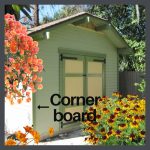
Corner boards
Trim boards placed at the outside corners of a house; most commonly used with wood siding.
Craftsman
An architectural or interior style, inspired by the Arts and Crafts movement, & brought to America by Gustav Stickley. This is a good video that will help you more completely understand what a Craftsman House is.

Dentil
A decorative molding using evenly spaced rectangular blocks. A row of dentils can project from beneath the roof line of a building, in ceilings, furniture & it is also seen in built-ins.
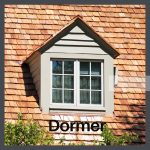
Dormer
A projection of vertical walls through the sloped roof plane with or without a window & its own roof ties into the home’s main roof. Dormers allow the natural light & ventilation to enter into upper floors or attic spaces.
Double-hung window
This is the type of window that you will most see in bungalows. They are composed of 2 sashes, one over the other & are built to slide over one another, each one opening independently. Rather than trying to show or to ‘splain it to you, see can them here, doing their slidy thing, in this great video.
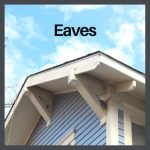
Eaves
The lower part of a roof plane extends outward from the structure at the same slope as the roof & is generally finished with a fascia board. Sometimes referred to as the roof overhang. The eave on a gable end is sometimes referred to as the gable overhang.

Eave brackets
Often triangular in shape, eave brackets are used at the gable ends of a roof to help support the roof overhang. They can be decorative or structural.
Edge Flashing
The metal trim that is placed on the edge of the roof covering the seam between the roof plan on the eave & the fascia board. Sometimes referred to as drip edge.
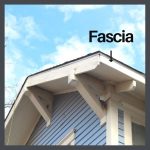
Fascia
A horizontal board positioned on edge & attached to the ends of the rafters or truss ends where gutters are typically supported. This is called an eave fascia. Fascia placed on the end of a gable roof end is called gable fascia.
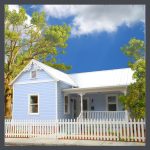
Folk Victorian
A more practical & affordable version of the typical ornate Victorian, seen in the U.S. from around 1890-1910, influencing typical bungalow design.
Footing
A footing supports foundation or bearing walls carrying the weight of upper floors, roof structures, etc. A footing is generally wider than the foundation or bearing wall & is constructed on undisturbed soil to achieve the maximum stability possible. Footings run continuously under all bearing & foundation walls or intermittently under piers.
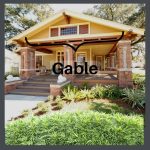
Gable
A triangular portion of a wall between the edges of intersecting roof pitches, or slopes. A clipped gable has its point “clipped” off.
Gable roof
A pitched roof terminating in a gable at one or both ends.
Gutters
A channel attached to the fascia board designed to carry away water that runs off the roof surface. Read the article about why they are important to maintaining the condition of your foundation.
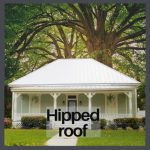
Hipped roof
A roof that slopes in 4 directions, like a pyramid.
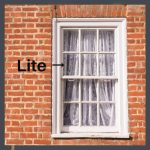
Lites
Separated glass areas in a window, usually separated by some sort of grid pattern.
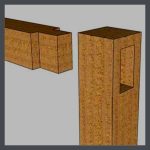
Mortise & tenon
A type of joint used in building structures or furniture that connects two pieces of wood or other material, having two parts, the mortise hole which has a hole & the tenon which has a tongue. The joint may be glued, pinned, or wedged to secure the pieces together. .
This joint is also used with other materials. For example, it is traditionally used by both stonemasons and
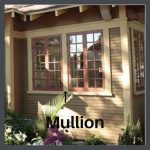
Mullion
Vertical pieces of wood that separate 2 windows that sit side-by-side.
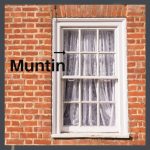
Muntins
Vertical & horizontal strips that divide a window’s glass into a grid, or diagonally, into a lattice pattern. They provide stability & support to panes of glass, & were initially used when manufacturers of the past, needed to use several smaller panes to create a large window.
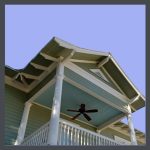
Outrigger
A horizontal brace for the gable eaves. This house in the photo above has 3 outriggers on the front porch gable. Also referred to as a corbel.
Pier foundation
A series of masonry supports that act as the building or porch foundation & allow air flow under the building. Typically used in warmer climates where ground freezing is not an issue. You can read more about foundations here.
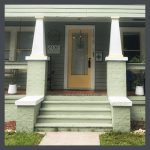
Pony wall
A short wall, typically 3′ in height. The term is often used interchangeably with “knee wall” or “cripple wall.” You can see them on porches & as walls that serve as guards on stairs or balconies.
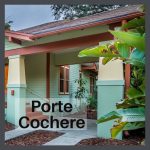
Porte- cochere
A roofed structure extending from the side of the house, usually from the porch, over the driveway to provide shelter when you are coming from the car into the house.
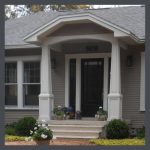
Portico
A small porch, usually just over the door.

Profile
A shape that is applied to the edge of a piece of wood such as a door or window frame, exterior or interior trim or a window or door jamb. This creates shadow lines and visual interest in the trim piece.
Rabbet
To cut a step-shaped recess along the edge or in the face of a piece of wood, typically forming a match to the edge or lap of another piece.). Here’s a video that explains it perfectly!
Rafter
A framing member, immediately beneath the roofing material extending from the perimeter wall to the ridge of the home. The rafters support the exterior roof surface. They are often left exposed on Craftsman style bungalows.
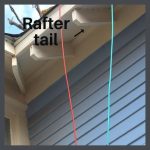
Rafter tail
Portion of a rafter that projects beyond the exterior wall to support the eaves (often cut into decorative designs when left exposed.)
Ridge
The highest part of a roof where the sloped roof planes meet. Sometimes referred to as the roof peak.
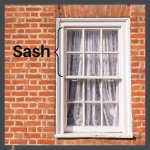
Sash
A window frame. A sash window is made of one or more movable panels or “sashes” that hold panes of glass, which are often separated from other panes (or “lites”) by narrow wood strips (or “muntins.”) A double-hung window has 2 panels or sashes.
Shed Roof
A single sloped roof section which covers an entire area. Structures are often covered by several shed roofs sloping in various directions. Dormers are also often covered with shed roof sections.
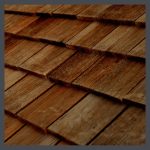
Shingles
A small, thin piece of wood, thinner at the top & thicker toward the bottom, that are laid in staggered, overlapping rows as a covering for the roof or sides of a house.
Shotgun house
A narrow house that has a gabled front porch & 2 or more rooms laid out straight behind it. The rooms are connected without hallways. This type of house has doors at each end of it, front & back.
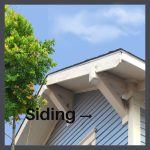
Siding
The exterior material applied to the walls of a house or other building meant to shed water, protect the walls from the effects of weather, insulate, & is key in the aesthetics of the structure.
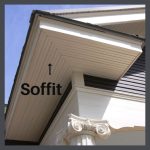
Soffit
The underside area of a building arch, balcony, or an overhanging eave.
Story book
Houses built to look like where Hansel & Gretel & friends could have lived.
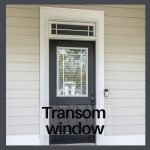
Transom window
A window that is placed above a doorway.
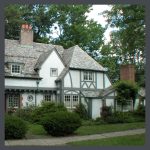
Tudor
Usually stone or a light-color stucco, Tudors feature peaked gables & two-toned exteriors, dressed up with half-timbering.
Window sill
The bottom horizontal trim member at the base of a window projecting outward.
 STAY IN THE BUNGALOW KNOW!!!
STAY IN THE BUNGALOW KNOW!!!
Sign up for our newsletter & receive our FREE E-book, 7 VITAL Things to Do Before You Hire a Contractor.

by bungalow101 | Nov 29, 2022 | Places to visit
 Florida’s history museums & historic museum houses tell a 3D tale of the state & the land boom of the 20’s that cannot be fully expressed in any book, though I have to admit that I did a pretty good job in the historic documenatry film I produced!
Florida’s history museums & historic museum houses tell a 3D tale of the state & the land boom of the 20’s that cannot be fully expressed in any book, though I have to admit that I did a pretty good job in the historic documenatry film I produced!
The financial momentum of the times was astonomical! I am not trying to lure you away from my blog, but this page clearly explains the culture of the times. It is a fascinating & enlightening read.
Welcome back!
A great many of these homes were bungalows, a style not too different from the houses built by the early settlers, with deep porches, prominent overhangs & an abundance of large windows. After several years of coaxing, American Bungalow Magazine came to Florida & featured homes in 4 neighborhoods in the central part of the state. You can read about them on my Instagram page.
DUNEDIN
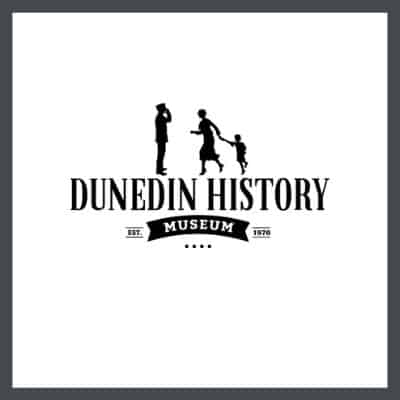 Dunedin History Museum
Dunedin History Museum
“Where History Comes Alive”
I love this friendly, quirky little museum. The last exhibit we saw there was “Jagged Lines: America’s Tattoo Tradition,” focusing on the evolution of tattoo art.
The Museum collections contains approximately 2,000 artifacts, 2,500 photographs, & a library of 200 volumes of local & State history. Their permanent exhibits feature statewide topics such as the railroad & citrus industries, but the best ones are regional topics such as Dunedin’s multicultural origins, pioneering families, & even the story of the development of the alligator tank used by the U.S. Marines during WWII in the Pacific.
LARGO
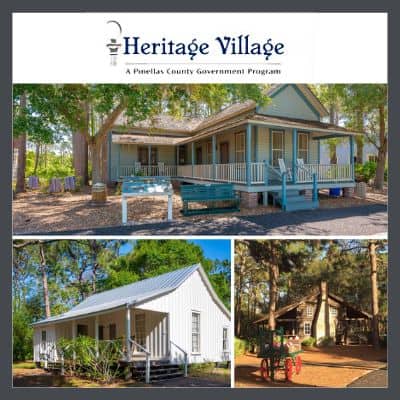 Heritage Village
Heritage Village
Explore this 21-acre living history museum located in its natural pine and palmetto landscape. Included amongst the structures & exhibits is the Turner House, built in 1915, of the Florida vernacular bungalow style of that time period.
The house was bequeathed to the County, along with $100,000 in moving costs & the contents of the 1915 bungalow. Now let me explain when I say contents- 6 pages of documented items, including: “furniture, accessory items, lighting, artwork, mirrors, wall pieces, toys, school memorabilia, linens, clothing, shoes, hats, costume jewelry, kitchen furnishings, tableware, cameras, clocks, radios, fans, china sets, glassware, serving pieces, decorative glass, pottery, vases, figurines, Belleview Biltmore items, sporting goods & more.
Some of the notable items include an 1860 quilt, silver plate flatware set from 1921, state license plates from 1949-1953, a child’s pedal car from 1933 and a 1940 Clearwater High School class ring.”
These items are on display at the museum of the grounds & sweep you into the life of this family whose story is told in photos, maps & sign around the museum. The house is not yet open, needing much work to make it safe, so stop by & pitch in a nice donation so that you’ll be able to actually tour the house in the future.
TAMPA
 Tampa Bay History Center
Tampa Bay History Center
A Smithsonian Affiliate museum, the History Center includes three floors of permanent and temporary exhibition galleries in 60,000 square feet, focusing on 12,000 years of Florida’s history, heritage & culture, focusing on Tampa Bay.
It offers many permanent & changing exhibits as well as activities in which you can learn about the area, including:
Docent-guided walking tours of Tampa’s historic sites and neighborhoods,
A monthly book group focused on Florida literature. The event is free with registration,
Florida Conversations is a free, monthly lecture series highlighting research into Florida history,
As well as many activities for children & teens.
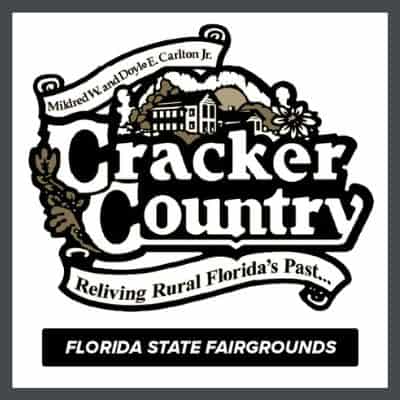 Cracker Country
Cracker Country
I discovered Cracker Country, a living history museum of old rural buildings from the late 19th Century, which were relocated to the Florida State Fairgrounds when we had come to see the fair, but I was much more interested in the old buildings & demonstrations of early settler skills than in rollercoaster rides. (Well, not really. I was there for the gardening displays, the crafts & the corn dogs.)
The key features of living in Florida are the heat & humidity & the resultant awful creatures. The homes of Cracker Country display great ingenuity of design in creating dwellings in which people could experience some degree of comfort through shade, ventilation & elevation.
You can see the bungalow in these early designs. Our homes here in Florida, tend to have large porches, & deep overhangs, tall windows & lots of ‘em!
Ybor City Museum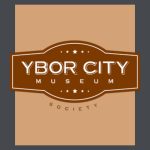
In 1886, when Tampa was mostly pine scrub. cigar manufacturer & entrepreneur Don Vicente Martinez Ybor came from Cuba via Key West to found Ybor City, the “Cigar Capital of the World.” This museum, housed in the historic Ferliia Bakery, (built by another old Tampa family in 1923 after the original building from 1835 was destroyed by fire) & urban park are dedicated to the preservation of Ybor City’s unique cultural heritage.
In addition to their great collection of artifacts, you can often see demonstrations of cigar rolling but the very best part is the film about the area which sweeps you back to the birth of historic of Ybor City.
TARPON SPRINGS
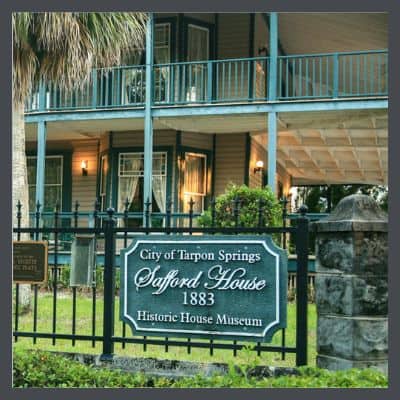 The Safford House Museum
The Safford House Museum
Although the main draw in Tarpon is the sponge docks & commercial/tourist area, I enjoy trotting around the historic downtown area & driving through the old residential areas built in the late 1800- early 1900’s.
A great attraction is the 1883 Safford House Museum, restored to its original Victorian splendor, which was the home of one of the city’s original developers. Listed on the National Register of Historic Places, the house is a fine example of late 19th century Florida vernacular architecture, & complete with period furnishings & family possessions, it provides the full flavor of upper-class living in the state as it was developing.
Take the opportunity to visit Florida’s history museums & historic museum houses. It’s the only way to discover the true flavor of the Sunshine State.
If you’re a local, all these museums & homes need your volunteer skills. Your participation will provide you with a great learning experience & reward you with warm friends as mine did.
TIP: Read my article about the wonderful historic places to visit in Sarasota HERE.
 STAY IN THE BUNGALOW KNOW!!!
STAY IN THE BUNGALOW KNOW!!!
Sign up for our newsletter & receive our FREE E-book, 7 VITAL Things to Do Before You Hire a Contractor.
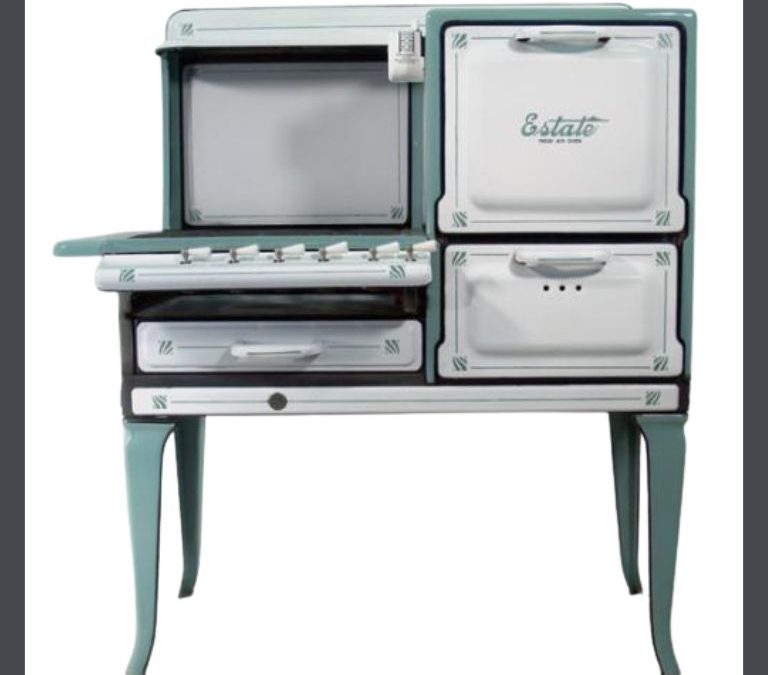
by bungalow101 | Nov 8, 2022 | Kitchens
PUTTING IT ALL TOGETHER
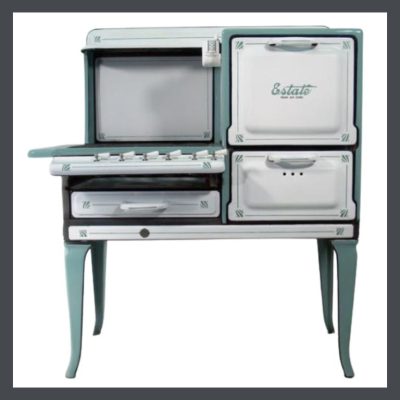 Clutching my well worn BUNGALOW KITCHENS book, I began collecting the pieces for my dream bungalow kitchen in Tampa. The first was the stove because I knew that it would take 2 ½ years to be restored, all the way in Georgia. When I had lived in L.A., there were several antique appliance sources, one within walking distance, where you could just walk in & buy an old stove.
Clutching my well worn BUNGALOW KITCHENS book, I began collecting the pieces for my dream bungalow kitchen in Tampa. The first was the stove because I knew that it would take 2 ½ years to be restored, all the way in Georgia. When I had lived in L.A., there were several antique appliance sources, one within walking distance, where you could just walk in & buy an old stove.
Not so in Tampa. I found the exact stove I wanted on eBay in New England, & they shipped it to Georgia. I was at high anxiety about her little Queen Anne legs, having seen plenty of stoves with damaged ones & begged the shippers to be gentle with these delicate appendages. When it arrived in Georgia, I called the owner of the restoration shop for a status report & all was well with the lady’s gams. I set the timer for 2 ½ years. Tick. Tick. Tick.
The next step was the sink. I really wanted a green sink. I searched eBay, Etsy, Craigslist, local salvage yards for over a year. Every week I diligently scrolled, called & searched for my sink. I saw some very cool sinks, many of which would have worked well in my kitchen but I was intent on using jadeite green. For many years I have been stuck on yellow or red & white in bungalow kitchens but for some reason, those colors just no longer appealed.
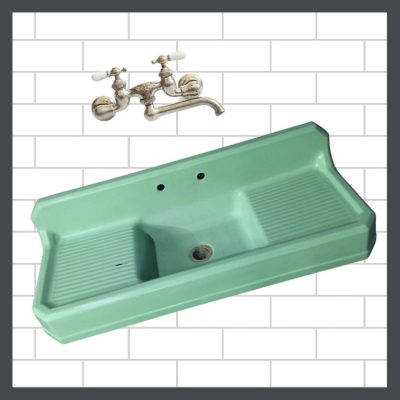 Finally, there it was on eBay. Not only was it green, but it had clipped corners, like the gable of my house! I outbid the competition & had the huge, heavy, expensive sink shipped to me where I put it in storage, awaiting the 2 ½ years until my stove would be ready, to pass. Only 1 ½ years left to go!
Finally, there it was on eBay. Not only was it green, but it had clipped corners, like the gable of my house! I outbid the competition & had the huge, heavy, expensive sink shipped to me where I put it in storage, awaiting the 2 ½ years until my stove would be ready, to pass. Only 1 ½ years left to go!
On to flooring. I had, long before, admired a green checkerboard floor in Jane Powell’s LINOLEM . I am a big fan of lino but, I also really like the resilience of cork, which is available in limited colors. It was not easy to get samples of either of these materials. What was common in L.A. was down-right weird in Tampa. Fortunately, we carried 2 lines of cork in my flooring company which allowed me to get my samples directly from the manufacturers.
The linoleum experience was pretty funny. I called a flooring store that mentioned lino on their website. I was very explicit- linoleum, not vinyl. Do you know the difference? “Absolutely! We have samples in many colors.’
I grabbed my keys & trotted out the door. When I arrived at the showroom, I was directed to a large display of, you guessed it- vinyl. The salesman thought that they were the same material. He was very confused. Fortunately, the next store had real lino & I got my samples.
THE DREAM BUNGALOW KITCHEN COLLECTABLES FRENZY
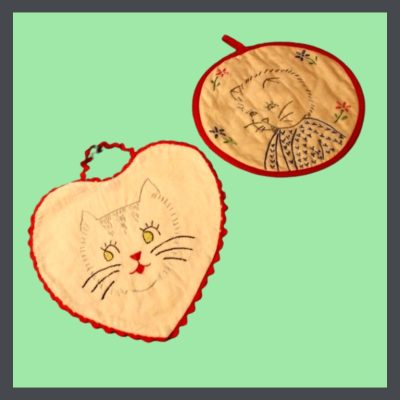 Meanwhile, I accumulated mountains of kitchenalia- old mixers, toasters, coffee pots, cooking implements. All in my beautiful jadeite green. My biggest addiction was potholders- kitty potholders. It got to the point that I was wondering if I would need to build a kitchen annex to display them!
Meanwhile, I accumulated mountains of kitchenalia- old mixers, toasters, coffee pots, cooking implements. All in my beautiful jadeite green. My biggest addiction was potholders- kitty potholders. It got to the point that I was wondering if I would need to build a kitchen annex to display them!
I also had quite a kitty teapot problem. The thing with the internet is that one can amass a lifetime collection of about anything in a matter of hours. And I did! Over the course of 2 ½ years I gathered several lifetimes of kitty teapots. I paused only long enough to add to my kitty pillow collection. At least I had a bed on which I could display them!
Poor Hubby, every day boxes of this stuff arriving, none of which made any sense to him.
Then there was the cabinet jewelry. When I outfitted my 1910 Craftsman in Eagle rock, I formed a friendship with my hardware specialist at House of Antique Hardware, Jennifer. She assisted me in choosing lighting & in finding replacements for some of my other hardware. If they didn’t have exactly what I needed there, she would search it out for me through the many connections she had developed in her decades in the industry. She truly lived up to her title of hardware specialist again & again.
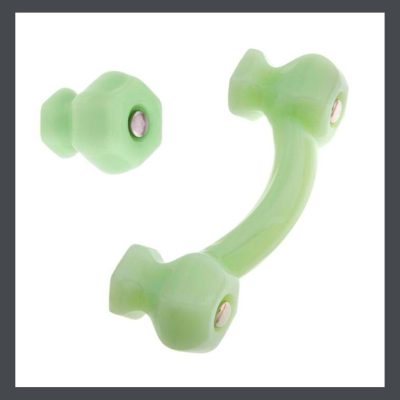 Turned out that her sister had a winter place in St. Pete so when Jennifer came to visit her, we would get together & she & I would talk old houses & her sister & my husband would talk food. (Sister introduced Hubby to his favorite restaurant in Tampa Bay.)
Turned out that her sister had a winter place in St. Pete so when Jennifer came to visit her, we would get together & she & I would talk old houses & her sister & my husband would talk food. (Sister introduced Hubby to his favorite restaurant in Tampa Bay.)
Because I never got it together to restore my Craftsman kitchen, I decided to use knobs & pulls in my 1925 Mid-Century Modest that were wholly inappropriate. I had planned to use these in clear in the Craftsman & wanted the green for the 1925’er.
My dear friend Jane Powell was a preservation bulldog, however, she left the door open by saying that anything was fine if it had a really good backstory. I consider this to qualify as a really good backstory. Heck, when she restored her own kitchen in the Sunset House, she used an antique candy store display case as a kitchen island & she was delighted with it!
On this page you will see many pictures of Jane’s beloved bunga-mansion, an altogether imposing house. One of the things that I admired about Jane was that she was so at home in this house & so not overwhelmed by its size, & frankly, the discomforts of living in an very old, partially restored mansion. As beautiful as it is, the stairs are steep, you can get lost in all the rooms, & it’s really cold. The last time we were there was just before Christmas & I shivered all night long under 3 folded double blankets.
THE BUNGALOW KITCHEN DREAM CRUSHER
Mid the 2 ½ year wait for the stove, surrounded by my lino samples, my sink, my potholders & my green glass hardware, the Recession hit. Construction shrank by 86% in Florida. That left all of us scrambling for the remaining 14%. We lost $50,000 on a Victorian we had restored. I was on the sidewalk every weekend, yard saleing my childhood dolls, Grandma’s pressed glass & my Christmas decorations to make my payroll.
When the stove restoration was finally complete, we carted it home & parked it in a corner in the ugly kitchen. After the financial hit of the Recession, I couldn’t justify the expense. Additionally, working 80 hours a week, I never had a spare minute to put it all together. When we sold the house, I finally admitted defeat, donated the sink to Habitat & sold the stove, the potholders & the kitchen implements.
BUNGALOW KITCHEN DREAM REDEMPTION
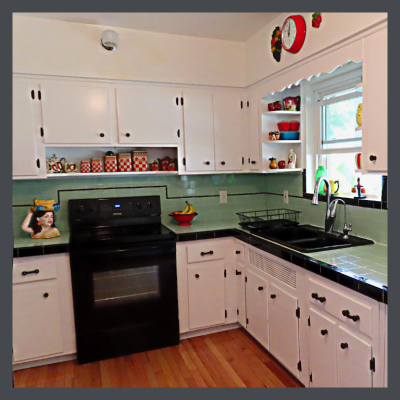 I blog about bungalows because I have been talking, writing, advocating & educating for & about them incessantly over the past 20 years & living in them for over 40. I should have been blogging about them since the dawning of the Age of the Internet. It took searching my heart, house bound in a world-wide pandemic, for what brought me joy to get me started blogging, but better late than never!
I blog about bungalows because I have been talking, writing, advocating & educating for & about them incessantly over the past 20 years & living in them for over 40. I should have been blogging about them since the dawning of the Age of the Internet. It took searching my heart, house bound in a world-wide pandemic, for what brought me joy to get me started blogging, but better late than never!
After experiencing too many hurricanes in a frame house, I now live in a 1955 block, Modest Ranch. (The pink 50’s sink- remember?) This house when I purchased it, was almost completely original. The kitchen had been messed with so I put it right again & I used my 1910 glass hardware (in black) because, by golly, I have a good backstory!
This article is all about my long hoped for bungalow kitchen. Thanks to my blog, I got to put it together & show it off to hundreds of people.
Thank you, gentle readers. You have mended my broken heart.

STAY IN THE BUNGALOW KNOW!!!
Sign up for our newsletter & receive our FREE E-book, 7 VITAL Things to Do Before You Hire a Contractor.

 The dangers of restoring an old house can be considerable, but with proper planning can be minimized. Let’s take a look at the actions required.
The dangers of restoring an old house can be considerable, but with proper planning can be minimized. Let’s take a look at the actions required. OSHA (Occupational Safety & Health Administration) is a U.S. federal body whose mission is to “assure safe & healthy working conditions for working men & women by setting & enforcing standards & by providing training, outreach, education, & assistance.”
OSHA (Occupational Safety & Health Administration) is a U.S. federal body whose mission is to “assure safe & healthy working conditions for working men & women by setting & enforcing standards & by providing training, outreach, education, & assistance.” SDS’s tell users, both workers & homeowners, the properties of each chemical, what the hazards of the product are to the individual & to the environment. They let you know how to use the product safely, what will happen if the recommendations are not followed, & how to recognize symptoms of exposure. Very importantly, they lay out the steps of what to do if emergencies should occur.
SDS’s tell users, both workers & homeowners, the properties of each chemical, what the hazards of the product are to the individual & to the environment. They let you know how to use the product safely, what will happen if the recommendations are not followed, & how to recognize symptoms of exposure. Very importantly, they lay out the steps of what to do if emergencies should occur.
 The SDS’s are about only the new materials that are being used. There’s also the issue of the old materials coming out. Amongst these is our old buddy, lead. I’m not a fan as I have expressed loudly in this article.
The SDS’s are about only the new materials that are being used. There’s also the issue of the old materials coming out. Amongst these is our old buddy, lead. I’m not a fan as I have expressed loudly in this article.



 Long ago, when feebly attempting to restore a Folk Victorian, I discovered that the biggest challenge of restoring an old house is battle fatigue. It’s extremely easy to get disheartened. I know I’m not your mother (Disclaimer: I think I’m everybody’s mother.) but I restored this miserable Folk Victorian & learned some great lessons. I had to, in order to survive! I also had to keep going so that I would lose only $50,000 instead of $250,000.
Long ago, when feebly attempting to restore a Folk Victorian, I discovered that the biggest challenge of restoring an old house is battle fatigue. It’s extremely easy to get disheartened. I know I’m not your mother (Disclaimer: I think I’m everybody’s mother.) but I restored this miserable Folk Victorian & learned some great lessons. I had to, in order to survive! I also had to keep going so that I would lose only $50,000 instead of $250,000.








 This bungalow details
This bungalow details 


































 Florida’s history museums & historic museum houses tell a 3D tale of the state & the land boom of the 20’s that cannot be fully expressed in any book, though I have to admit that I did a pretty good job in the
Florida’s history museums & historic museum houses tell a 3D tale of the state & the land boom of the 20’s that cannot be fully expressed in any book, though I have to admit that I did a pretty good job in the 






 Clutching my well worn
Clutching my well worn  Finally, there it was on eBay. Not only was it green, but it had clipped corners, like the gable of my house! I outbid the competition & had the huge, heavy, expensive sink shipped to me where I put it in storage, awaiting the 2 ½ years until my stove would be ready, to pass. Only 1 ½ years left to go!
Finally, there it was on eBay. Not only was it green, but it had clipped corners, like the gable of my house! I outbid the competition & had the huge, heavy, expensive sink shipped to me where I put it in storage, awaiting the 2 ½ years until my stove would be ready, to pass. Only 1 ½ years left to go! Meanwhile, I accumulated mountains of kitchenalia- old mixers, toasters, coffee pots, cooking implements. All in my beautiful jadeite green. My biggest addiction was potholders- kitty potholders. It got to the point that I was wondering if I would need to build a kitchen annex to display them!
Meanwhile, I accumulated mountains of kitchenalia- old mixers, toasters, coffee pots, cooking implements. All in my beautiful jadeite green. My biggest addiction was potholders- kitty potholders. It got to the point that I was wondering if I would need to build a kitchen annex to display them! Turned out that her sister had a winter place in St. Pete so when Jennifer came to visit her, we would get together & she & I would talk old houses & her sister & my husband would talk food. (Sister introduced Hubby to his favorite restaurant in Tampa Bay.)
Turned out that her sister had a winter place in St. Pete so when Jennifer came to visit her, we would get together & she & I would talk old houses & her sister & my husband would talk food. (Sister introduced Hubby to his favorite restaurant in Tampa Bay.) I blog about bungalows because I have been talking, writing, advocating & educating for & about them incessantly over the past 20 years & living in them for over 40. I should have been blogging about them since the dawning of the Age of the Internet. It took searching my heart, house bound in a world-wide pandemic, for what brought me joy to get me started blogging, but better late than never!
I blog about bungalows because I have been talking, writing, advocating & educating for & about them incessantly over the past 20 years & living in them for over 40. I should have been blogging about them since the dawning of the Age of the Internet. It took searching my heart, house bound in a world-wide pandemic, for what brought me joy to get me started blogging, but better late than never!